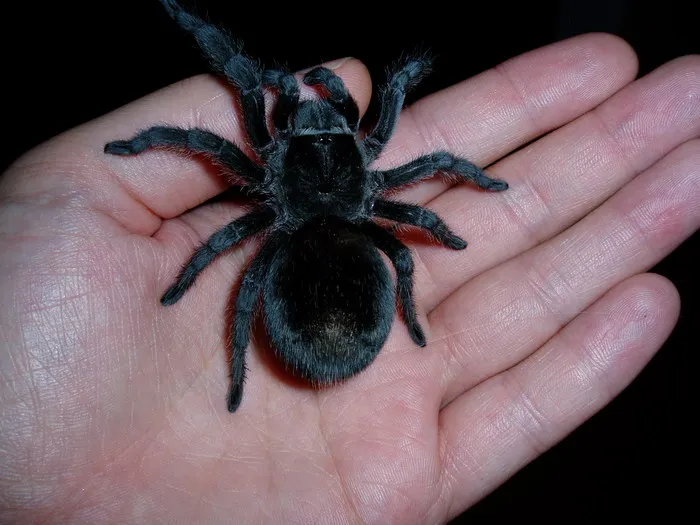What is a Full Grown Brazilian Black Tarantula (BBT)
The Brazilian Black Tarantula (Grammostola pulchra), often referred to as the BBT, is a captivating arachnid species that is popular in the exotic pet trade. A “full grown” BBT is an adult tarantula that has reached its maximum size and is capable of reproduction. These magnificent creatures undergo several molting stages throughout their lives, with each molt bringing them closer to their full size. It’s crucial to understand the characteristics of a full-grown BBT to provide appropriate care and appreciate their unique features. These spiders are known for their docile temperament, making them a good choice for beginner tarantula keepers. However, responsible ownership is key, which includes understanding their needs and providing a suitable habitat. Understanding a full-grown BBT involves recognizing its physical attributes, behavioral patterns, and specific needs for optimal health and longevity. They are a long-lived species, making them a rewarding pet for those willing to make the commitment.
Size and Appearance
A full-grown Brazilian Black Tarantula typically boasts a leg span of up to 6-8 inches (15-20 cm). Their bodies are robust, covered in velvety black hairs, giving them a striking appearance. The overall coloration is a deep, uniform black, although some individuals might display subtle variations in shade. Males and females can be differentiated by their physical attributes. Mature males often have a smaller body size and longer legs compared to females. In addition, males possess pedipalps modified for mating, often appearing bulbous at the tips. Females, being larger and more robust, are the primary focus for breeding, hence their significant size difference. The physical appearance of a full-grown BBT is a testament to its maturity and overall health. The spider’s shiny, black carapace and the dense covering of hairs contribute to their intimidating but beautiful look. The colors are a deep black, with no other color markings.
Lifespan of a Full Grown BBT
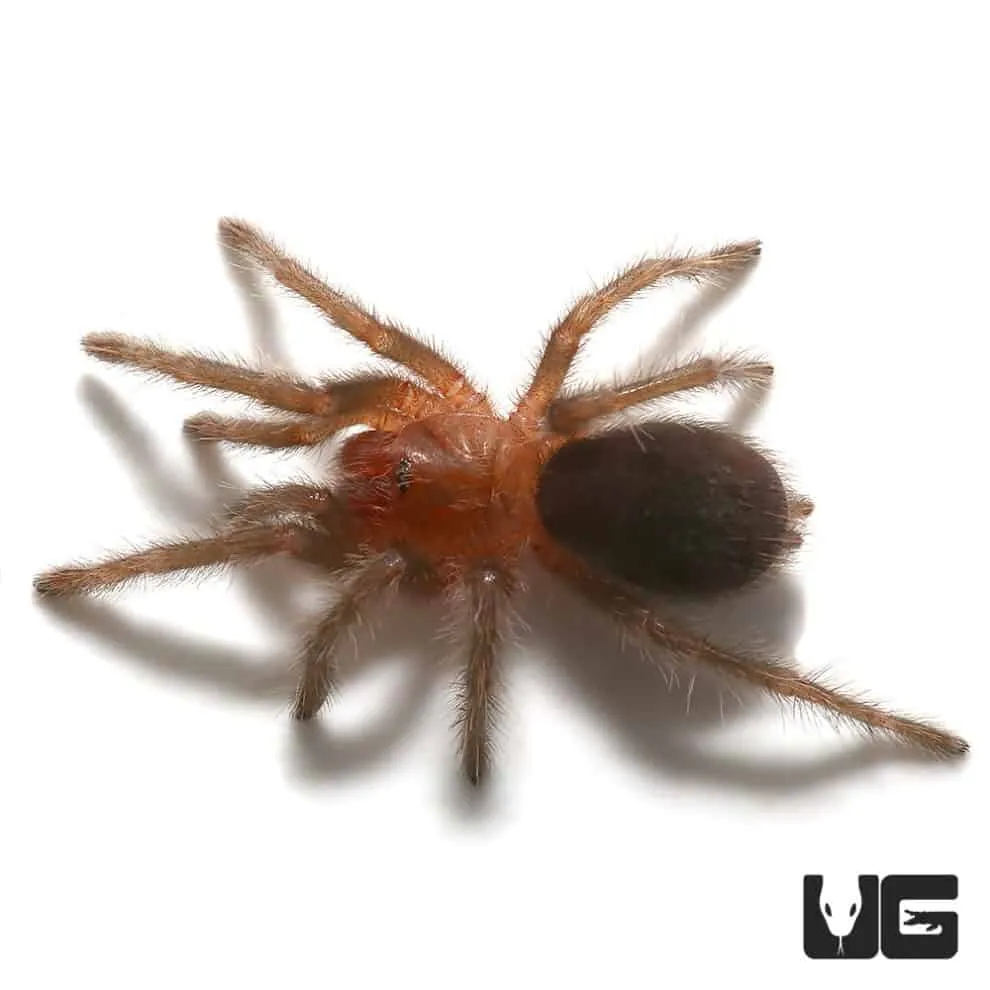
The lifespan of a full-grown Brazilian Black Tarantula is an essential consideration for any potential owner. Females generally live much longer than males. A female BBT can live for 20-30 years under optimal conditions, while males typically live only 5-10 years. This difference in lifespan is primarily due to the biological stresses associated with mating for males. Females, on the other hand, can continue to molt and grow throughout their lives, extending their longevity. Factors influencing the lifespan include proper care, including appropriate temperature, humidity, diet, and a stress-free environment. Regular health checks and maintenance of the habitat are crucial. A longer lifespan translates to a long-term commitment and a deeper understanding of the spider’s needs. Providing an enriching environment and prompt medical attention when needed are all important aspects of responsible pet ownership. The longevity is an important factor for choosing this spider as a pet.
How to Determine the Age of a BBT
Determining the exact age of a Brazilian Black Tarantula can be challenging, especially if its history is unknown. However, several indicators can provide clues to its age. The size of the tarantula is a primary indicator; a larger spider is generally older, although the exact age is difficult to pinpoint without knowing the molt history. By observing the molting frequency, one can estimate the growth rate and age. The more frequently a spider molts, the younger it is. As they reach adulthood, the molting frequency decreases. Examining the pedipalps of a male can also provide clues; mature males possess the “boxing glove” shape pedipalps used for mating. Consulting with experienced tarantula keepers and breeders may help gain further insights. While precise age determination is not always possible, careful observation of the spider’s size, molting history, and other physical attributes can help create an informed estimate. Accurate age is hard to tell, but some indicators help.
Behavioral Characteristics of a Full Grown BBT
Full-grown Brazilian Black Tarantulas exhibit a range of fascinating behaviors. They are generally known for their docile temperament, making them a popular choice for hobbyists. However, individual personalities can vary. Some BBTs can be skittish, while others are more tolerant of handling. Understanding their behavior is key to responsible ownership. The majority of the time, they are calm and relatively inactive, often spending much of their time in their burrows or hiding spots. They are nocturnal hunters, actively foraging for food primarily at night. Careful observation is critical to understanding their needs. A BBT’s behaviors are often influenced by factors such as environmental conditions, stress levels, and health status. Any deviations from the norm should prompt investigation to ensure the spider’s well-being. The spider’s behavior will indicate its health and well being.
Temperament and Handling
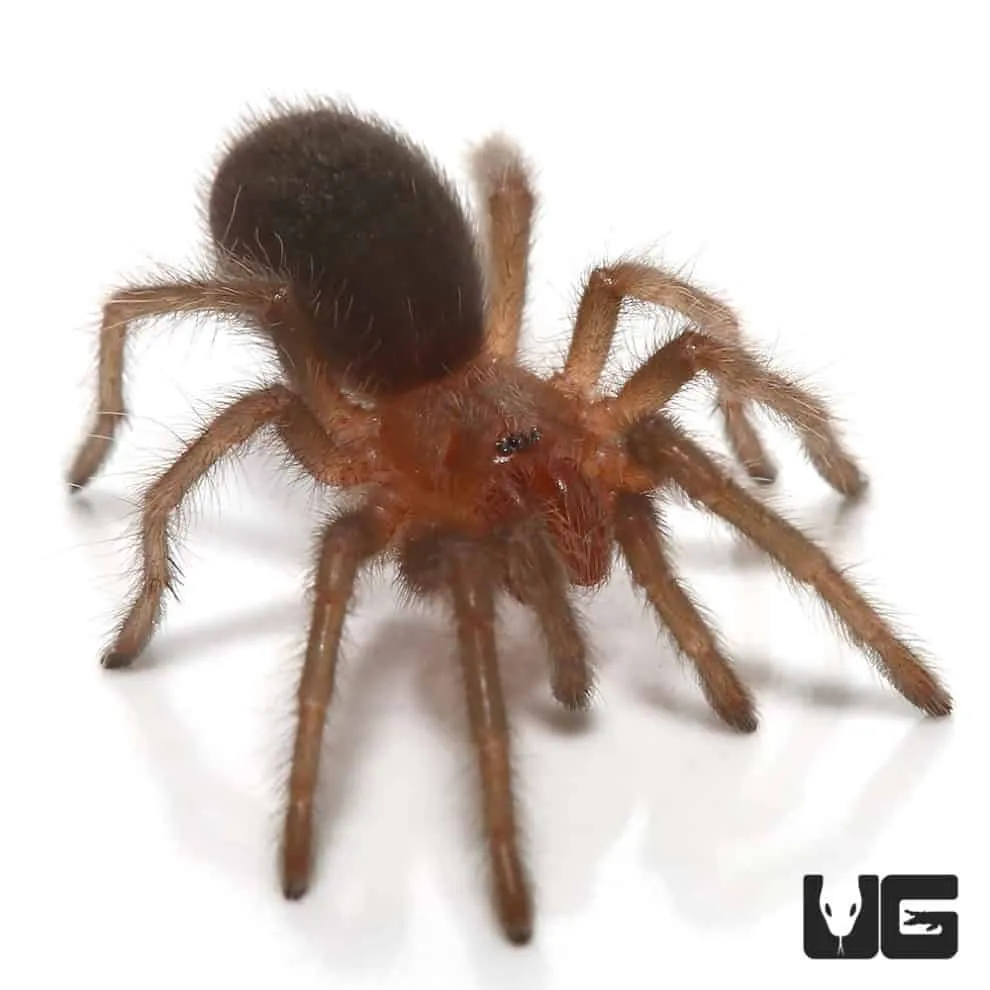
The temperament of a full-grown BBT is generally considered docile. Many owners find them to be quite handleable, provided that the owner is calm and the spider is approached with respect. However, it’s essential to remember that each tarantula has its unique personality. Some may be more tolerant of handling than others. Handling should be kept to a minimum to avoid unnecessary stress, which can compromise their health. Always handle a BBT over a soft surface to minimize the risk of injury in case of a fall. Avoid sudden movements, and always allow the tarantula to walk onto your hand rather than grabbing or forcing it. When interacting with a BBT, it’s crucial to respect its space and understand its body language. If the spider shows signs of stress, such as raising its front legs or flicking hairs from its abdomen (a defense mechanism), it’s best to leave it alone. Prioritizing the spider’s well-being ensures a positive and safe experience for both the owner and the pet.
Defensive Behaviors
Despite their generally docile nature, full-grown BBTs can exhibit defensive behaviors when feeling threatened or stressed. One of the most common defense mechanisms is the flicking of urticating hairs from their abdomen. These hairs, when contacted, can cause skin irritation, particularly in sensitive areas like the eyes and mouth. The spider will rub its hind legs against its abdomen, releasing these hairs as a means to deter potential predators or threats. Another defense behavior includes a threat posture, where the tarantula rears up, displaying its fangs. Although they are generally reluctant to bite, a bite can be painful and, in rare instances, may cause allergic reactions. Responsible tarantula owners should always be aware of these defense mechanisms and handle their BBTs with caution. Creating a stress-free environment and minimizing handling reduces the likelihood of these defensive behaviors. Understanding and respecting these defensive behaviors is crucial for ensuring the safety and well-being of both the spider and the handler. Always be aware of the signs of stress.
Common Myths and Misconceptions about BBTs
Numerous myths and misconceptions surround Brazilian Black Tarantulas. One common myth is that all tarantulas are highly aggressive and dangerous. While BBTs can exhibit defensive behaviors, they are generally docile and not inherently aggressive. Another myth is that tarantula bites are deadly. In reality, their venom is not usually life-threatening to humans, although bites can be painful. A common misconception is that all tarantulas need a complex and expensive setup. BBTs are relatively easy to care for, requiring a straightforward enclosure setup that replicates their natural habitat. Many people also believe that BBTs are difficult to handle. While handling should be done with caution, many BBTs tolerate handling if approached calmly and respectfully. Another misconception is that BBTs require a specific, rare diet. The reality is that BBTs can thrive on a diet of common insects, readily available at most pet stores. Addressing and debunking these misconceptions helps owners and enthusiasts develop a better understanding and appreciation of these amazing creatures.
BBTs and Their Natural Habitat
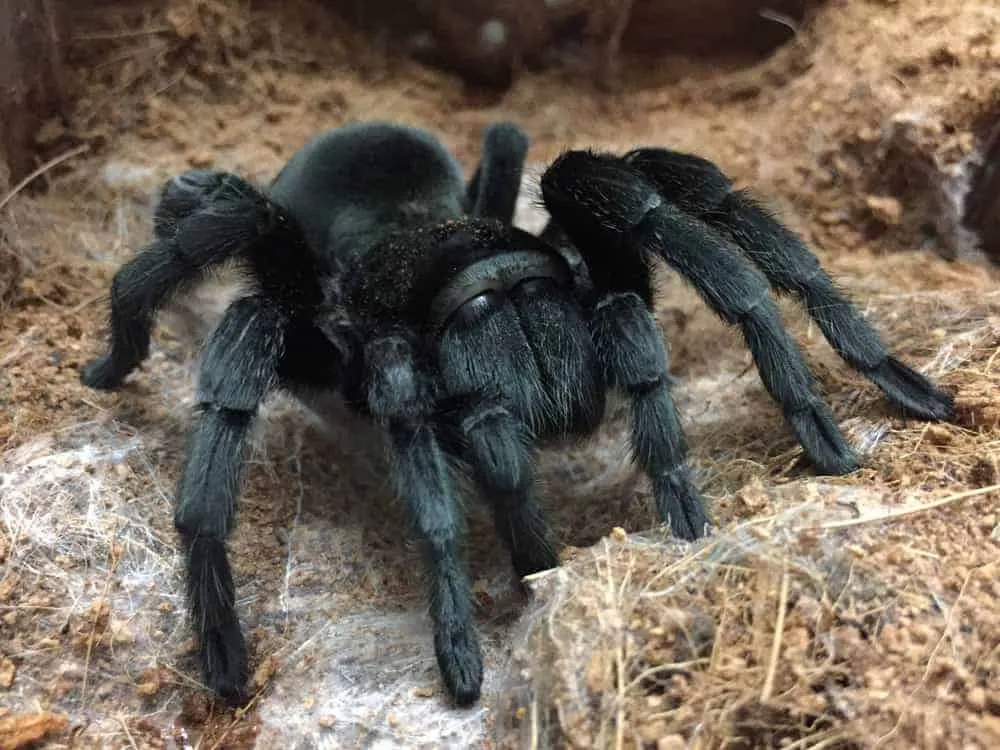
Understanding the natural habitat of a full-grown Brazilian Black Tarantula is crucial for providing the appropriate care. These spiders are native to the rainforests of Brazil and Uruguay. In their natural environment, BBTs live in burrows or under logs, where they spend much of their time. Their natural habitat is characterized by high humidity and relatively stable temperatures. They prefer to live in terrestrial environments, spending their time on the ground rather than in trees. The forest floor provides an ideal habitat for hunting insects and other invertebrates. They are well-adapted to the rainforest environment, with their coloration allowing them to blend seamlessly with their surroundings. Replicating these conditions in captivity is essential for the BBT’s health and well-being. Providing a suitable habitat that closely mimics their natural environment supports their overall health. Mimicking their natural surroundings allows for proper shedding, eating habits, and normal behavioral patterns.
Geographic Distribution
The geographic distribution of the Brazilian Black Tarantula is primarily centered in Brazil and Uruguay. Within Brazil, they are found in various regions, especially in areas with suitable forest habitats. In Uruguay, they inhabit similar ecosystems. The specific locations within these countries often include humid forests and regions with abundant leaf litter, ideal for burrowing and hunting. Understanding their native range helps in appreciating their adaptability and habitat requirements. These spiders are not typically found in highly populated areas, as they require a specific set of environmental conditions to thrive. The preservation of their native habitat is also key to their long-term survival. Knowledge of their geographic distribution provides a better understanding of their needs and supports the responsible care and conservation of this fascinating species. The natural range is important to know for proper care.
Environmental Needs
Providing the right environmental conditions is crucial for the health and well-being of a full-grown Brazilian Black Tarantula. Maintaining appropriate temperature and humidity levels is paramount. A temperature range of 75-85°F (24-29°C) is ideal. This can be achieved using a heat mat or a low-wattage heat lamp, ensuring the heat source doesn’t directly touch the enclosure. Humidity levels should be kept between 60-70%, achievable by misting the enclosure a few times a week and providing a water dish. The substrate should consist of a mix of peat moss, coconut fiber, and vermiculite, which helps maintain humidity and provides a suitable surface for burrowing. A proper enclosure setup includes a secure, appropriately sized terrarium with adequate ventilation. The enclosure should be large enough for the spider to move freely and provide ample hiding spots. Essential items include a water dish, a hide, and a good substrate depth. Consistent maintenance and monitoring of these environmental factors are essential for ensuring a long and healthy life for the BBT. The right environment is important for the spider’s health.
Feeding Habits and Nutritional Needs
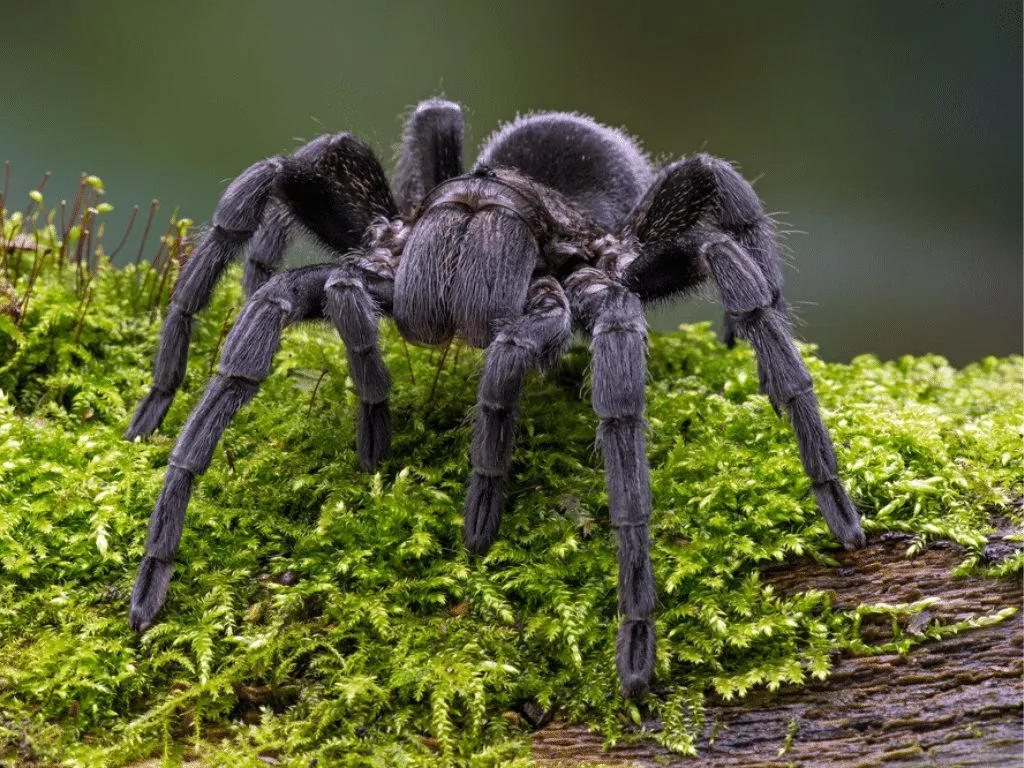
Full-grown Brazilian Black Tarantulas are primarily insectivores. Their diet in the wild consists mainly of insects, such as crickets, cockroaches, and various other invertebrates. In captivity, it’s important to replicate this diet to ensure they receive the necessary nutrients. The primary goal is to replicate what they would eat in their natural environment. A balanced diet helps maintain their overall health. Nutritional needs are easily met by providing a varied diet of live insects. They can be fed pre-killed prey items, although many BBTs prefer live food, triggering their natural hunting instincts. The spider’s feeding habits are also affected by age, temperature, and stress levels. By providing the right type of food, at the right frequency, you ensure your BBT thrives. Regular feeding schedules and careful observation of the spider’s feeding behavior are key to providing for their nutritional needs. Ensure that any insects are gut-loaded before being fed to the spider to provide optimal nutritional value. Proper nutrition is vital.
Dietary Requirements for Full Grown BBTs
The dietary requirements of a full-grown Brazilian Black Tarantula are relatively straightforward. The primary component of their diet should be a variety of live insects. Crickets and cockroaches are common choices, readily available at most pet stores. Mealworms and super worms can also be included but should be used as supplemental food items due to their higher fat content. It is important to vary their diet to provide a balanced nutritional intake. Gut-loading the insects before feeding them to the tarantula is highly recommended. This involves feeding the insects nutritious foods, such as vegetables and commercial insect food, to enhance their nutritional value. This provides a more nutritious meal for your BBT. Always remove any uneaten prey from the enclosure within 24 hours to prevent stress or harm to the tarantula. The diet needs to be appropriately sized for the tarantula. Avoid any insects that are too large to prevent harm to the tarantula. A varied diet is key.
Feeding Frequency
Feeding frequency for a full-grown Brazilian Black Tarantula typically varies. In general, full-grown BBTs can be fed once or twice a week. However, it’s essential to monitor the spider’s behavior and appetite. Overfeeding can lead to obesity and potentially shorten its lifespan. Offering food and observing whether the tarantula readily accepts it is key. The spider’s abdomen should be slightly rounded, but not excessively so. Adjust feeding frequency based on the spider’s size, metabolism, and environmental conditions. During periods of slower growth or lower activity, such as during premolt, it’s normal for BBTs to eat less or refuse food altogether. Provide fresh, clean water at all times and ensure the tarantula has access to a water source, such as a shallow water dish. The feeding frequency can be adjusted to fit your spider’s individual needs. Remember that BBTs are relatively inactive, so it’s not uncommon for them to have periods of fasting. Responsible feeding practices include providing a balanced diet, monitoring the spider’s body condition, and adjusting the feeding schedule accordingly.
